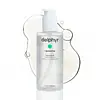What's inside
What's inside
 Key Ingredients
Key Ingredients

 Benefits
Benefits

 Concerns
Concerns

 Ingredients Side-by-side
Ingredients Side-by-side

Ethylhexyl Palmitate
EmollientCetyl Ethylhexanoate
EmollientPolyglyceryl-10 Diisostearate
EmulsifyingPolyglyceryl-6 Dicaprate
EmulsifyingSorbitan Sesquioleate
EmulsifyingPolyglyceryl-2 Laurate
EmulsifyingWater
Skin ConditioningPyrus Communis Fruit Extract
Skin ConditioningRosa Damascena Flower Water
MaskingEclipta Prostrata Extract
Skin ConditioningIris Florentina Root Extract
MaskingCucumis Melo Seed Extract
Skin ConditioningHedera Helix Leaf/Stem Extract
AntimicrobialMelia Azadirachta Leaf Extract
Skin ConditioningCaprylyl Glycol
EmollientVitis Vinifera Seed Oil
EmollientHelianthus Annuus Seed Oil
EmollientSimmondsia Chinensis Seed Oil
EmollientEthylhexylglycerin
Skin ConditioningMoringa Oleifera Seed Oil
EmollientButylene Glycol
Humectant1,2-Hexanediol
Skin ConditioningCollagen Extract
Skin ConditioningAcetyl Hexapeptide-8
HumectantTocopherol
AntioxidantOligopeptide-1
Skin ConditioningCopper Tripeptide-1
Skin ConditioningPalmitoyl Pentapeptide-4
Skin ConditioningPalmitoyl Tripeptide-5
Skin ConditioningTripeptide-1
Skin ConditioningHexapeptide-9
Skin ConditioningPalmitoyl Tripeptide-38
Skin ConditioningPentapeptide-4
Skin ConditioningHexapeptide-12
Skin ConditioningEthylhexyl Palmitate, Cetyl Ethylhexanoate, Polyglyceryl-10 Diisostearate, Polyglyceryl-6 Dicaprate, Sorbitan Sesquioleate, Polyglyceryl-2 Laurate, Water, Pyrus Communis Fruit Extract, Rosa Damascena Flower Water, Eclipta Prostrata Extract, Iris Florentina Root Extract, Cucumis Melo Seed Extract, Hedera Helix Leaf/Stem Extract, Melia Azadirachta Leaf Extract, Caprylyl Glycol, Vitis Vinifera Seed Oil, Helianthus Annuus Seed Oil, Simmondsia Chinensis Seed Oil, Ethylhexylglycerin, Moringa Oleifera Seed Oil, Butylene Glycol, 1,2-Hexanediol, Collagen Extract, Acetyl Hexapeptide-8, Tocopherol, Oligopeptide-1, Copper Tripeptide-1, Palmitoyl Pentapeptide-4, Palmitoyl Tripeptide-5, Tripeptide-1, Hexapeptide-9, Palmitoyl Tripeptide-38, Pentapeptide-4, Hexapeptide-12
Ethylhexyl Palmitate
EmollientSorbeth-30 Tetraoleate
EmulsifyingTriethylhexanoin
MaskingCetyl Ethylhexanoate
EmollientDiisostearyl Malate
EmollientCaprylic/Capric Triglyceride
MaskingSorbitan Sesquioleate
EmulsifyingCaprylyl Glycol
EmollientEthylhexylglycerin
Skin ConditioningWater
Skin ConditioningDipropylene Glycol
HumectantGlycerin
HumectantHydrogenated Lecithin
EmulsifyingPolyglyceryl-10 Oleate
Skin ConditioningAsiaticoside
AntioxidantMadecassic Acid
Skin ConditioningAsiatic Acid
Skin ConditioningEthylhexyl Palmitate, Sorbeth-30 Tetraoleate, Triethylhexanoin, Cetyl Ethylhexanoate, Diisostearyl Malate, Caprylic/Capric Triglyceride, Sorbitan Sesquioleate, Caprylyl Glycol, Ethylhexylglycerin, Water, Dipropylene Glycol, Glycerin, Hydrogenated Lecithin, Polyglyceryl-10 Oleate, Asiaticoside, Madecassic Acid, Asiatic Acid
Ingredients Explained
These ingredients are found in both products.
Ingredients higher up in an ingredient list are typically present in a larger amount.
Caprylyl Glycol is a humectant and emollient, meaning it attracts and preserves moisture.
It is a common ingredient in many products, especially those designed to hydrate skin. The primary benefits are retaining moisture, skin softening, and promoting a healthy skin barrier.
Though Caprylyl Glycol is an alcohol derived from fatty acids, it is not the kind that can dry out skin.
This ingredient is also used as a preservative to extend the life of products. It has slight antimicrobial properties.
Learn more about Caprylyl GlycolCetyl Ethylhexanoate is an emollient ester. It comes from cetearyl alcohol and 2-ethylhexanoic acid.
Cetyl Ethylhexanoate is an emollient that adds a velvety feel to skin without being greasy or oily. Emollients help trap moisture into your skin, keeping your skin soft and hydrated.
Ethylhexyl Palmitate, also known as octyl palmitate, is created from 2-ethylhexyl alcohol and palmitic acid. It is a fatty acid ester.
The fatty acid content of Ethylhexyl Palmitate makes it an emollient. Emollients help soften and hydrate your skin by trapping moisture within.
Ethylhexyl Palmitate is also used to help improve the texture of cosmetics. It helps other ingredient dissolve in products and help disperse ingredients more evenly.
You'll likely find this ingredient in sunscreen, as it is often used to mix UV-blocking ingredients such as avobenzone and ethylhexyl triazone.
It can also help stabilize the fragrances in a product as a fragrance fixative.
Ethylhexyl Palmitate can be used to substitute mineral oil.
Due to its high fatty acid content, it may not be fungal-acne safe.
Learn more about Ethylhexyl PalmitateEthylhexylglycerin (we can't pronounce this either) is commonly used as a preservative and skin softener. It is derived from glyceryl.
You might see Ethylhexylglycerin often paired with other preservatives such as phenoxyethanol. Ethylhexylglycerin has been found to increase the effectiveness of these other preservatives.
Sorbitan Sesquioleate is derived from sorbitol and oleic acid. It is an emulsifier and prevents ingredients from separating.
Specifically, this ingredient is a water-in-oil emulsifier, meaning it helps water dissolve into oil.
Some studies suggest this ingredient may cause irritation in some people. If you are unsure, it is best to patch test.
This ingredient may not be Malassezia folliculitis, or fungal-acne safe.
Learn more about Sorbitan SesquioleateWater. It's the most common cosmetic ingredient of all. You'll usually see it at the top of ingredient lists, meaning that it makes up the largest part of the product.
So why is it so popular? Water most often acts as a solvent - this means that it helps dissolve other ingredients into the formulation.
You'll also recognize water as that liquid we all need to stay alive. If you see this, drink a glass of water. Stay hydrated!
Learn more about Water